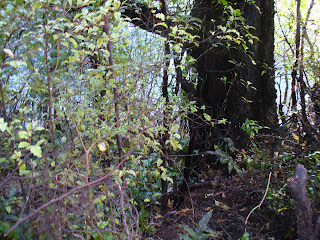Exams are upon us so I thought I would combine the last ENTO blog with learning for 2 exams!
The honey bee (Apis mellifera) covers aspects of ENTO 304, learning for flight & wings on 2nd & 3rd thoracic segments (more correctly called mesathoracic & metathoracic segments) with hammuli (hooks on hind wings which enable both fore and hind wings to couple together for flight to act as one wing), adaptations on hind legs (enlarged first tarsomere with combs) for holding pollen and packing into ’baskets’ and modified abdominal appendages called ovipositors forming the stinger. Also the honey bee is an ideal example for ECOL 311, covering sociality and optimal foraging theory not to mention pollination. But that’s another story. I’m going to cover some of the social insect side and the waggle dance.
Bees are a social insect and survival of the hive is dependent on the majority surviving. The pressure is on individual bees to find food with the least amount of energy expended and take it back to the hive to feed the holomeatabolous larvae (complete metamorphosis that the juvenile form does not resemble the adult).The cost may be their own life ending. It is therefore beneficial to tell foraging bees where a food supply is (Alcock 2001). Foraging bees are the female workers aged from 22 days and older. Each bee in a hive has a different job to do determined by age. The hive can only work if each individual is working for the benefit of the hive.
This paper is on the waggle dance of the honey bee (Thom 2007). It is a form of communication and behaviour in social insects to let the other members of the hive, the workers or foragers locate a newly found supply of food. This is a dance done darkness of the hive on the honeycomb and is followed by other foragers. Here they rely on pheromones (chemical odours) and vibrations, felt by antennae, to detect the movement. Communal recognition through pheromones are important in the darkness for nest mate recognition as well as food source. Two important pheromones have been detected in foraging bees which go in depth in the paper so will not mention any more here. If it is performed outside it is on a horizontal surface (Alcock 2001). It effectively gives them directions to the flowers. The pattern is a sort of number 8 figure with a wiggle in the centre (fig.1).
Figure 1; the pattern of the dance in relation to the sun’s angle.
Now to understand how bees can tell from this dance where food is.
If the bee goes in a circle then the flowers are close. If the dance has a waggle further away than 50 m. By measuring the number of circuits completed or the duration of the waggle we can work out the distance from the hive. The longer the waggle dances the further from the hive is the food source. By measuring the angle of the waggle with the vertical, the direction of the food is given (fig. 1). A bee on its way home can note the angle between the flowers, sun and hive. A fun to watch clip of the Waggle dance of honey bees is on you tube; hyperlink;
You may tell from just this short extract how complicated the honey bee has become. What an amazing little insect, one we don't want to loose.
References
Alcock J 2001.Animal Behaviour, chp 8, 7th ed; Sinauer Associates, Inc. Massachusettes
Thom C, Gilley DC, Hooper J, Esch HE 2007. The scent of the Waggle Dance. PloS Biology, 5(9); e228.








